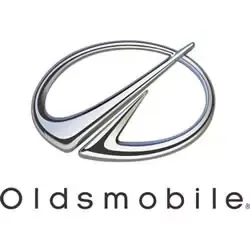Oldsmobile Cutlass Cruiser Tire Pressure
Most common recommended tire pressure for Oldsmobile Cutlass Cruiser can range from 30 psi to 35 psi depending on year of production, trim and OEM tire size, but it maybe different for older models. It is imperative to confirm the exact tire inflation for your Oldsmobile Cutlass Cruiser to ensure safety on the road. Always refer to your vehicle owner's manual for the correct tire pressure designated by vehicle's manufacturer.
Select your Oldsmobile Cutlass Cruiser production year to see its recommended tire inflation.
| Model Year | Front Tires | Rear Tires |
|---|---|---|
| 1994 Oldsmobile Cutlass Cruiser | 32 psi | 32 psi |
| 1993 Oldsmobile Cutlass Cruiser | 32 psi | 32 psi |
| 1992 Oldsmobile Cutlass Cruiser | 30 psi | 30 psi |
| 1991 Oldsmobile Cutlass Cruiser | 30 psi | 30 psi |
Recommended Tire Pressure for Oldsmobile Cutlass Cruiser
Maintaining the recommended tire pressure for an Oldsmobile Cutlass Cruiser is crucial for several key reasons that directly impact safety, performance, and economic efficiency. Proper tire inflation ensures optimal contact between the tire and the road, which enhances the vehicle's handling and stability, thereby reducing the risk of accidents due to loss of control. Additionally, tires inflated to the manufacturer's recommended levels are less prone to excessive wear and tear, which can significantly extend the life of the tires and reduce the need for premature replacement. From an economic standpoint, correctly inflated tires help in maintaining fuel efficiency, as underinflated tires increase rolling resistance and, consequently, fuel consumption. Furthermore, maintaining the right tire pressure is essential for ensuring the reliability of the tire pressure monitoring system (TPMS), a safety feature designed to alert the driver about significant changes in tire pressure. For the Oldsmobile Cutlass Cruiser, adhering to the recommended tire pressure is not just a matter of routine maintenance; it is an integral practice for preserving the vehicle's performance, ensuring passenger safety, and achieving cost savings on fuel and tire expenses, thereby contributing to a more environmentally friendly driving experience.

All listed guides, data and/or calculations are for informational purposes only. TirePressure.com does not warrant or make any representations regarding the accuracy of or the results of the use of this information. Always refer to vehicle owner's manual for the correct tire pressure configuration.